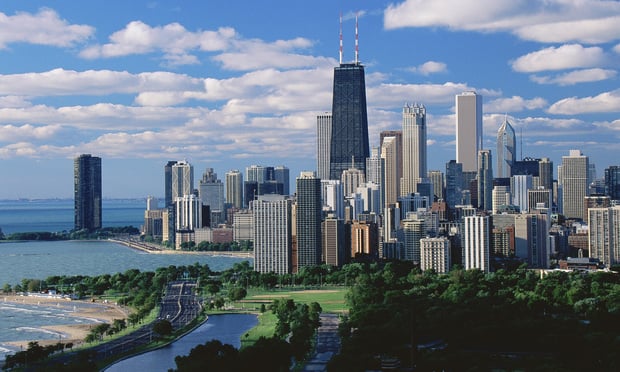Chicago industrial icon Jim Dieter, who was lured out of retirement to take over industrial brokerage at Cushman & Wakefield early this year, says he picked a great company and a great time to come back into the market. The former head of CB Richard Ellis’ industrial practice says he’s having the time of his life, with energy and passion of getting involved in the operational side again.
Recently, Dieter spoke with GlobeSt.com about the coming year, how movement has begun to pick up for industrial tenants nationwide, vacancy rates are stabilizing and absorption has increased substantially since late 2009. The US industrial market is ending the year on a positive-but-cautiously optimistic note, Dieter says.
GlobeSt.com: You’ve been at your new position since January, how have you adapted to un-retirement and the new job?
Dieter: It’s going great. We’re recruiting around the country, including here, and we’re instituting cutting-edge practices that I’ve learned in my experiences. This really includes collaboration – all large companies, including this one, are challenged by pushing to the edge of a oneness culture. I’m able to take everything we’re doing in the industrial platform and connect the dots, throughout the division and with the company as a whole. This communication includes a series webinars on all facets of the industry, both internal and inviting clients to participate. We just held a transportation webinar that cut across our industrial platform. We’re also conducting conferences throughout the industry, and geographically, one-to-two day conferences for brokers and clients. Finally, we have regional conference calls, with the single mission being collaboration, leveraging the great enterprise of Cushman & Wakefield. This is what clients expect of us, they want the national and global platform, but catered to their local need.
GlobeSt.com: What do you think of the current state of the industrial market?
Dieter: If you look at absolutes, look at the year to date, there’s overall nationwide negative absorption of 6.1 million square feet, significantly better than the negative 118 million square feet of absorption that we recorded at the same time in 2009. We’re starting to absorb space. If we want the rents to creep up, the number one way is to chip away at absorption, and the number two way is to not building anything anymore. We’ve got new construction at about nil, that’s great news, there’s really nothing that’s been added to the supply of any consequence. If this trend continues, we’ll see rents increase.
GlobeSt.com: What about the fundamentals of the industrial market? Moving forward, or not?
Dieter: Well, look at the trend in manufacturing. According to the Institute of Supply Management, there’s been a slowdown in manufacturing up until the past 12 months, where there’s been improvement and increased output. That is a huge factor. Also, look at the ports – with a few exceptions, US ports are reporting a year over year gain in container traffic, and a gain in exports by 15%. Intermodal business is up 17%. However, jobs still trump everything. If there’s a weight on everyone’s shoulder it’s the job market.
What drives the current activity now is that companies have been consistently looking over the last few years, nonstop, at efficiencies, how to do things better but more efficient. When a company is looking at efficiencies, whether in production or in distribution, the end result is usually a real estate transaction. The company goes through a study, and the end result is that they have too many buildings, or not enough buildings, or there’s modernization issues, or outsourcing to third-party logistics companies that allows the firm to take less space. The end result may be a real estate transaction, but not necessarily absorption.
GlobeSt.com: Do you think we’ve seen the end of the one-million-square-foot-plus distribution building, at least for a few years?
Dieter: I think we will see continued large building development. You’re always more efficient under one roof vs. having multiple smaller buildings. When the world gets back to normal, I think you’ll see that trend again. There will be new development coming, but it’s going to be very targeted and finite development.
GlobeSt.com: What do you see as the state of the industrial market next year?
Dieter: I’m cautiously optimistic. There’s been positive trends, exports and manufacturing continue to show growth, railroad shipments show growth, and companies appear to show growth in income statements. They appear to have cash in their companies. If there’s a confidence level that comes across nationally, companies will expand and move forward, and I see confidence written all over the state of affairs now.
© Touchpoint Markets, All Rights Reserved. Request academic re-use from www.copyright.com. All other uses, submit a request to [email protected]. For more inforrmation visit Asset & Logo Licensing.






